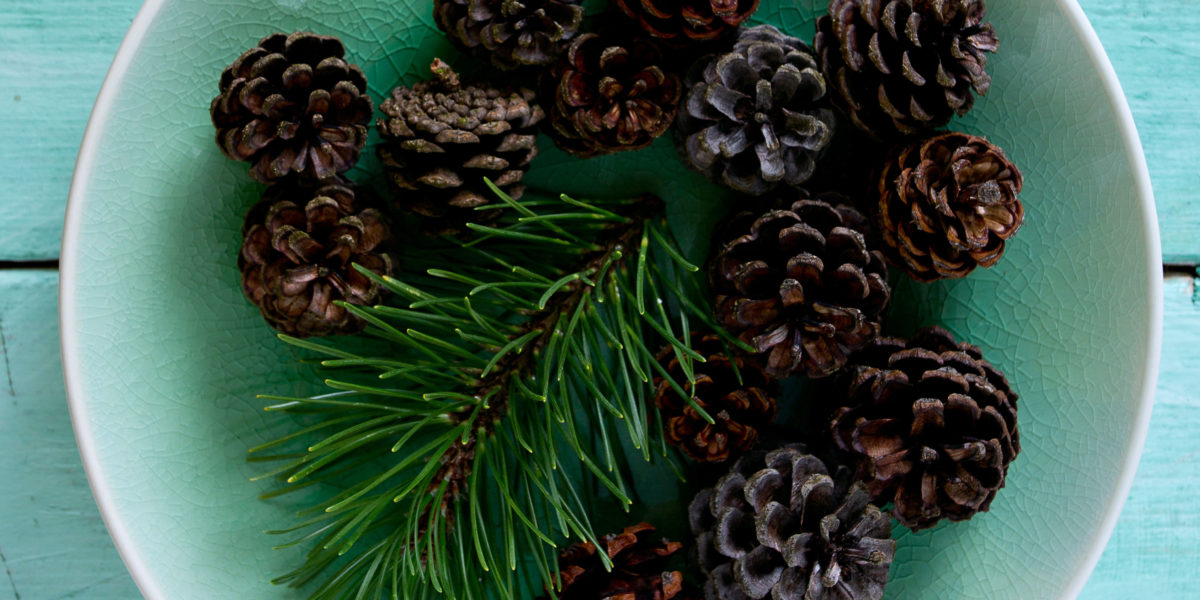
Yes, You Can (Seriously!) Eat a Conifer—Try These 5 Ways
Use needles, cones, and even bark to add an unexpected depth of flavor to your kitchen

Photo by Diana Taliun
If we’re to heed the charge of famous Scandinavian restaurants like Noma and Fäviken (R.I.P.), we should all be eating a lot more conifers. This is hardly a new notion; the father of foraging himself, Euell Gibbons, asked TV viewers, “ever eat a pine tree?” in his famous (and famously spoofed) 1974 Grape Nuts ad. But it’s doubtful that Mr. Gibbons ever used conifers for anything as exquisite as Rene Redzepi’s asparagus and spruce or Magnus Nilsson’s Finnish rye and pine bark bread.
Even outside the northern climes of Scandinavia, the edible properties of conifers have been gaining traction over the past few years. Nowadays, spruce tips are showing up in beer and redwood seedlings are appearing on five-star restaurant menus, and you don’t even have to be an intrepid outdoorsperson to enjoy the best the forest has to offer. Here are a few of our favorite ways to get more Vitamin Tree in our diet.
Butter
Spruce tips are the fresh green growth at the tips of the branches; just snap off a few and use them for all kinds of stuff, like this butter. To make spruce (or pine) butter, puree 2 sticks of butter with 1/4 cup of spruce tips for five minutes, then press through a chinoise or fine-mesh sieve. Spread it on fresh-baked bread, serve a pat with seared venison, or slather it onto fresh cone on the cob.
Barbecued Cones
We can’t attest to the flavor of these Norway spruce cones (not pine, Rene!), but it’s nice to know if you get lost in the woods you could survive on something from the Noma menu.
Sugar and Salt
Make sugar with pine, Douglas fir, or spruce tips by blitzing fresh tips with sugar or salt in a food processor at a 1:1 ratio by volume (e.g., a cup each) until a sandy consistency is achieved. Spread the mix onto a rimmed baking sheet and dry in a 200° oven overnight (or use a dehydrator). The salt is wonderful on game meats, french fries, or salmon, and the sugar can be sprinkled onto snickerdoodles, turned to syrup for making popsicles, or used to make icing for doughnuts.
Cocktails
Or, The Bon-Vivant’s Companion
Juniper berries (they’re actually cones) famously flavor gin, and Jerry Thomas’ indispensable Bon-Vivant’s Companion offers three different ingredients to make it even more bracing: pine, tansy, and wormwood (though he does note that they’re “not much used except in small country villages”). It’s entirely possible that those small country villages are near the Alps; Zirbenz pine cone liqueur hails from the Switzerland, and there’s an Alsatian eau de vie de bourgeons de sapin made from pine buds, which was historically used as a natural version of Robitussin for chest complaints. For some local flavor, Oregon’s own Clear Creek Distillery makes a wonderful Douglas fir brandy; sip it neat (preferably next to a crackling fire) or add it to toddies and sidecars. Or just pull some sprigs off your Christmas tree and muddle them into our Lighted Tree cocktail.
Varenye
Russians love their jams and conserves, and one of the nicest is varenye — whole fruit (or large chunks) preserved in thick syrup. They put up everything from strawberries to watermelon to quinces, and being the resourceful people they are, they even make a version with green baby pinecones harvested in late spring.
